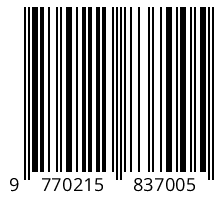FENOMENA JILBAB DALAM MASYARAKAT KOSMOPOLITAN: INTERPRETASI TEKS DAN KONTEKS ATAS AYAT JILBAB
DOI:
https://doi.org/10.18592/khazanah.v16i2.2336Keywords:
Jilbab, Masyarakat Kosmopolitan, Teks, KonteksAbstract
This paper aims to reveal the various interpretations of ulama to the meaning of the veil text. Then try to bring that understanding to the current development context. This paper is the result of literature research (library research) which is arranged in the form of papers. Data mining is carried out by exploring various sources that are relevant to this research, namely reviews from the mufassir, both classical and contemporary related to the veil verse in Alquran, namely Q.S. al-Ahzab: 59 and an-Nûr: 31, then compiled and read with a historically critical approach. This paper shows that the various ideas of classical and contemporary ulama are inseparable from the social context of their time. This social context ultimately makes the veil no longer just a symbol of identity, but more than that. The appearance of various hijab communities which later formed a new social movement has brought modern value in lifestyle and opened opportunities for the development of new sectors in the economy.References
Abidin, M. Zainal. “Revolusi Iran & Kebangkitan Kembali Dunia Islam.” In Tafsir Filsafat Atas Kehidupan: Risalah Seputar Filsafat Dan Isu-Isu Aktual Keislaman. Yogyakarta: PP UII Press, 2007. Abidin, Zainal. Rethinking Islam Dan Iman. Banjarmasin: IAIN ANTASARI PRESS,
Abu-Rabi‘, Ibrahim M. Intellectual Origins of Islamic Resurgence in the Modern Arab
World. New York: SUNY Press, 1996. Ahmadi, Dadi, and Nova Yohana. “Konstruksi Jilbab Sebagai Simbol Keislaman.”
MediaTor (Jurnal Komunikasi) 8, no. 2 (2007): 235–248. “Aisyah Adinda Kita Lirik - YouTube.” Accessed October 13, 2018. https://www.youtube.com/results?search_query=aisyah+adinda+kita+lir ik. Alatas, Alwi, and Fifrida Desliyanti. Revolusi Jilbab: Kasus Pelarangan Jilbab Di SMA
Negeri Se-Jabotabek, 1982-1991. Jakarta: Al-I’tishom Cahaya Umat, 2001. Aminudin. Kekuatan Islam dan pergulatan kekuasaan di Indonesia: sebelum dan sesudah runtuhnya rezim Soeharto. Yogyakarta: Pustaka Pelajar, 1999. http://books.google.com/books?id=8PTjAAAAMAAJ. Bakhash, Shaul. The Reign of the Ayatollahs: Iran and the Islamic Revolution. Basic
Books, 1984. Budiati, Atik Catur. “Jilbab: Gaya Hidup Baru Kaum Hawa.” Jurnal Sosiologi Islam
, no. 1 (2011). Esposito, John L, and Bakri Siregar. Dinamika kebangunan Islam: watak, proses dan
tantangan. Jakarta: Rajawali, 1987. Geertz, Clifford. Kebudayaan dan agama. Jakarta: Kanisius, 1992. Guindi, Fadwa El. Jilbab: antara kesalehan, kesopanan dan perlawanan. Penerbit
Serambi, 2003. Hakim, Lukman. “REKONTRUKSI FIQH HIJAB BERWAWASAN NUSANTARA Kajian Penafsiran Ayat Hukum Dalam Qs. Al-Ahzab: 59.” Ar-Risalah: Media Keislaman, Pendidikan Dan Hukum Islam 12, no. 2 (2014): 88–102. “Hasil Pencarian - KBBI Daring.” Accessed October 10, 2018.
https://kbbi.kemdikbud.go.id/entri/jilbab. Hidayanto, M. Fajar. “Aurat Wanita Dalam Aturan Hukum.” Al-Mawarid 5 (2016):
–85. Khoiri, Muhammad Alim. “Rekonstruksi Konsep Aurat (Analisis Pemikiran
Syahrur).” Universum 9, no. 2 (2015). Lukman, Fadli. “Sejarah Sosial Pakaian Menutup Kepala Muslimah Di Sumatera
Barat.” Musāwa 13, no. 1 (2014): 47–57.
Mahalli, Abu Iqbal. Muslimah Modern: dalam Bingkai al-Quran dan al-Hadis.
Yogyakarta: LeKPIM, 2000. Mustaqim, Abdul. “Pemikiran Fikih Kontemporer Muhamad Syahrur Tentang Poligami Dan Jilbab.” Al-Manahij: Jurnal Kajian Hukum Islam 5, no. 1 (2011): 67–80. Muzaffar, Chandra. “Kebangkitan Islam: Suatu Pandangan Global Dengan Ilustrasi Dari Asia Tenggara.” In Pembangunan Dan Kebangkitan Islam Di Asia Tenggara, edited by Saiful Muzani. Jakarta: LP3ES, 1993. Najib, Ainun. “Pementasan Drama Lautan Jilbab Karya Emha Ainun Nadjib Dalam Fenomena Pelarangan Menggunakan Jilbab Bagi Pelajar Muslimah Di Sekolah-Sekolah Negeri Di Indonesia (1986-1989 M).” PhD Thesis, UIN Sunan Ampel Surabaya, 2017. “Nida Ria - Jilbab Putih [Official Music Video] - YouTube.” Accessed October 11,
https://www.youtube.com/watch?v=MZHoIZif_K8&start_radio=1&list= RDMZHoIZif_K8. Pakuna, Hatim Badu. “Fenomena Komunitas Berjilbab; Antara Ketaatan Dan
Fashion.” Farabi 11, no. 1 (2014): 124. Shihab, M. Quraish. Jilbab: pakaian wanita Muslimah ; pandangan ulama masa lalu dan
cendekiawan kontemporer. Jakarta: Lentera Hati, 2009. ———. Tafsir Al Misbah. Vol. 10. Jakarta: Lentera Hati, 2010. Suhendra, Ahmad. “Kontestasi Identitas Melalui Pergeseran Interpretasi Hijab Dan Abstrak Jilbab Dalam Al Qur’an.” PALASTREN Jurnal Studi Gender 6, no. 1 (2016): 1–22. Syahrur, Muhammad. Al-Islâm Wa Al-Îmân Manzhûmatul Qiyam. Damaskus: al-
Ahâly Lithibâ’ah wa al-Nasyr wa al-Tauzî’, 1996. ———. Al-Kitâb Wa Al-Qur’ân: Qirâ’ah Mu’âshirah. Damaskus: Al-Ahâly Lithibâ’ah
wa al-Nasyr wa al- Tauzî’, 1990. Wahyudi Nasution. “Lautan Jilbab, Episode Awal Menuju Maiyah.” MEPNEWS.ID, November 21, 2016. https://mepnews.id/2016/11/21/lautan-jilbab-episode-awal-menuju- maiyah/.
Downloads
Published
How to Cite
Issue
Section
License
Authors who publish with this journal agree to the following terms:
- Authors retain copyright and grant the journal right of first publication with the work simultaneously licensed under a Creative Commons Attribution License that allows others to share the work with an acknowledgement of the work's authorship and initial publication in this journal.
- Authors are able to enter into separate, additional contractual arrangements for the non-exclusive distribution of the journal's published version of the work (e.g., post it to an institutional repository or publish it in a book), with an acknowledgement of its initial publication in this journal.
- Authors are permitted and encouraged to post their work online (e.g., in institutional repositories or on their website) prior to and during the submission process, as it can lead to productive exchanges, as well as earlier and greater citation of published work.

























